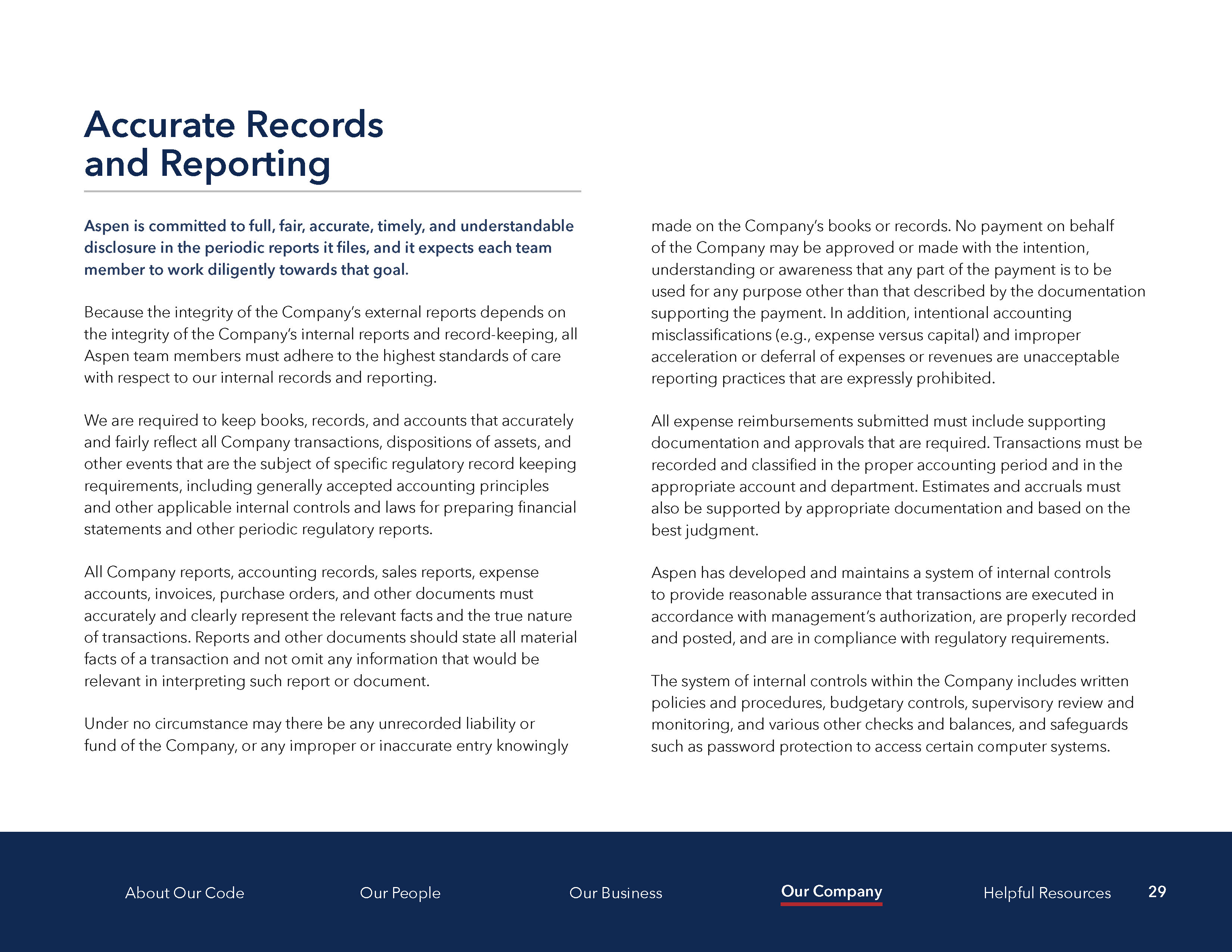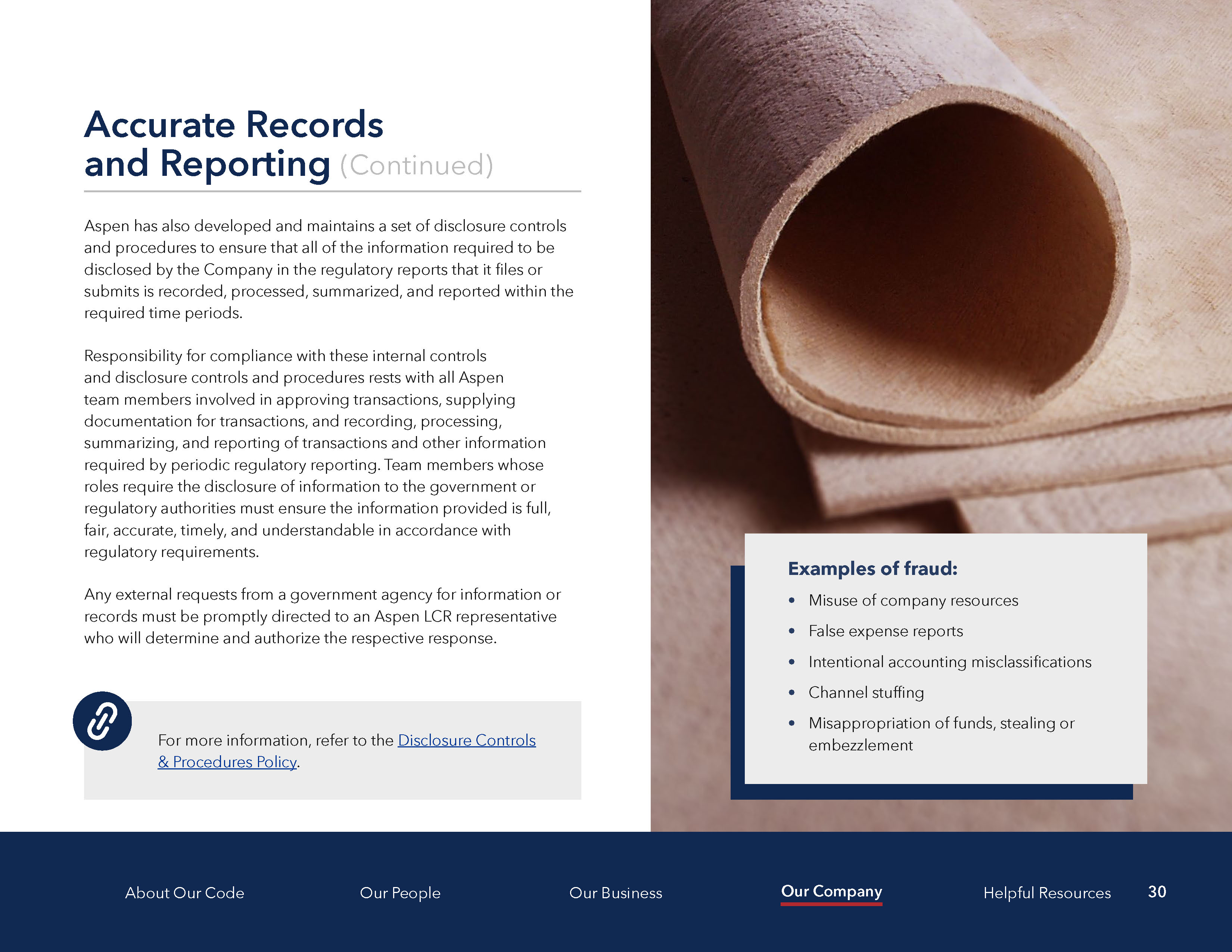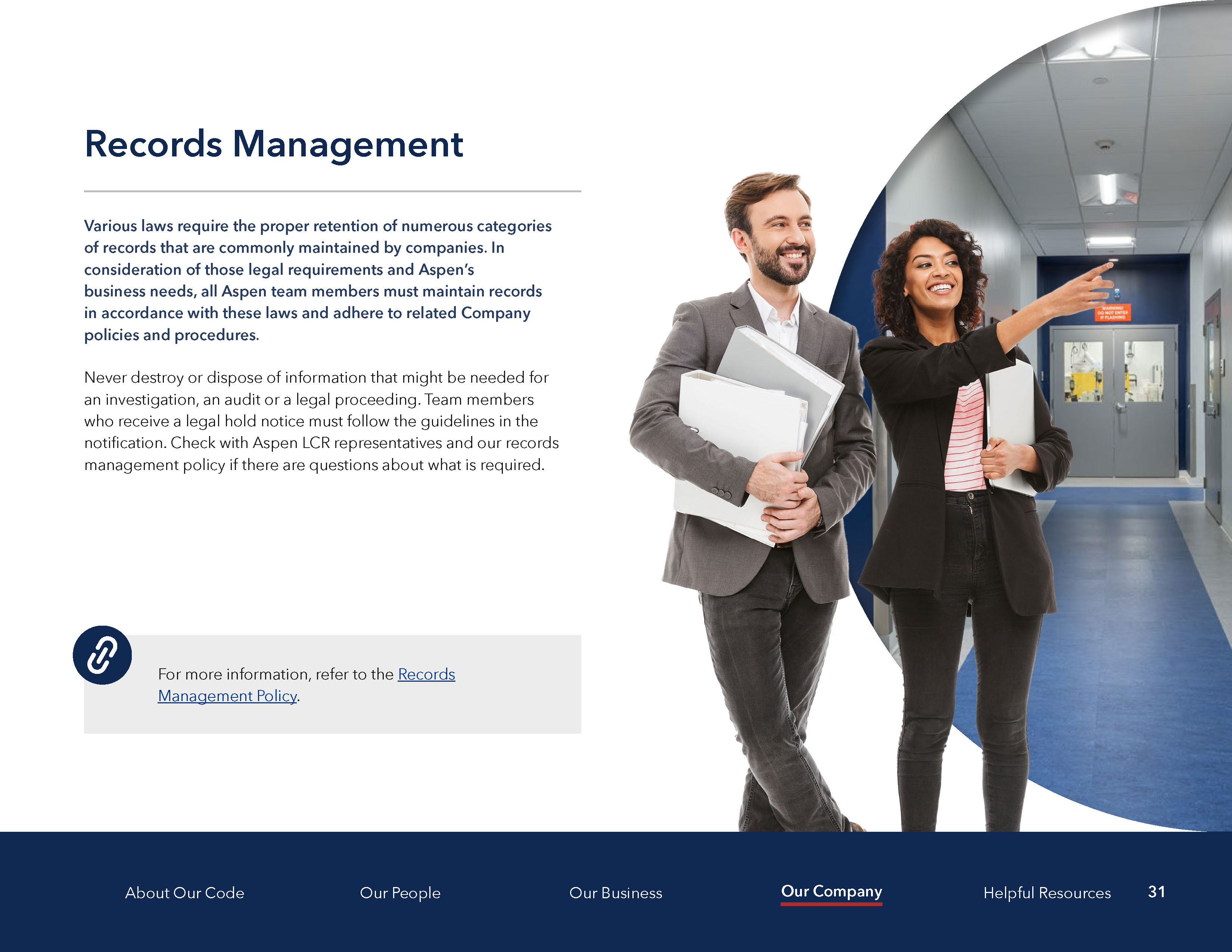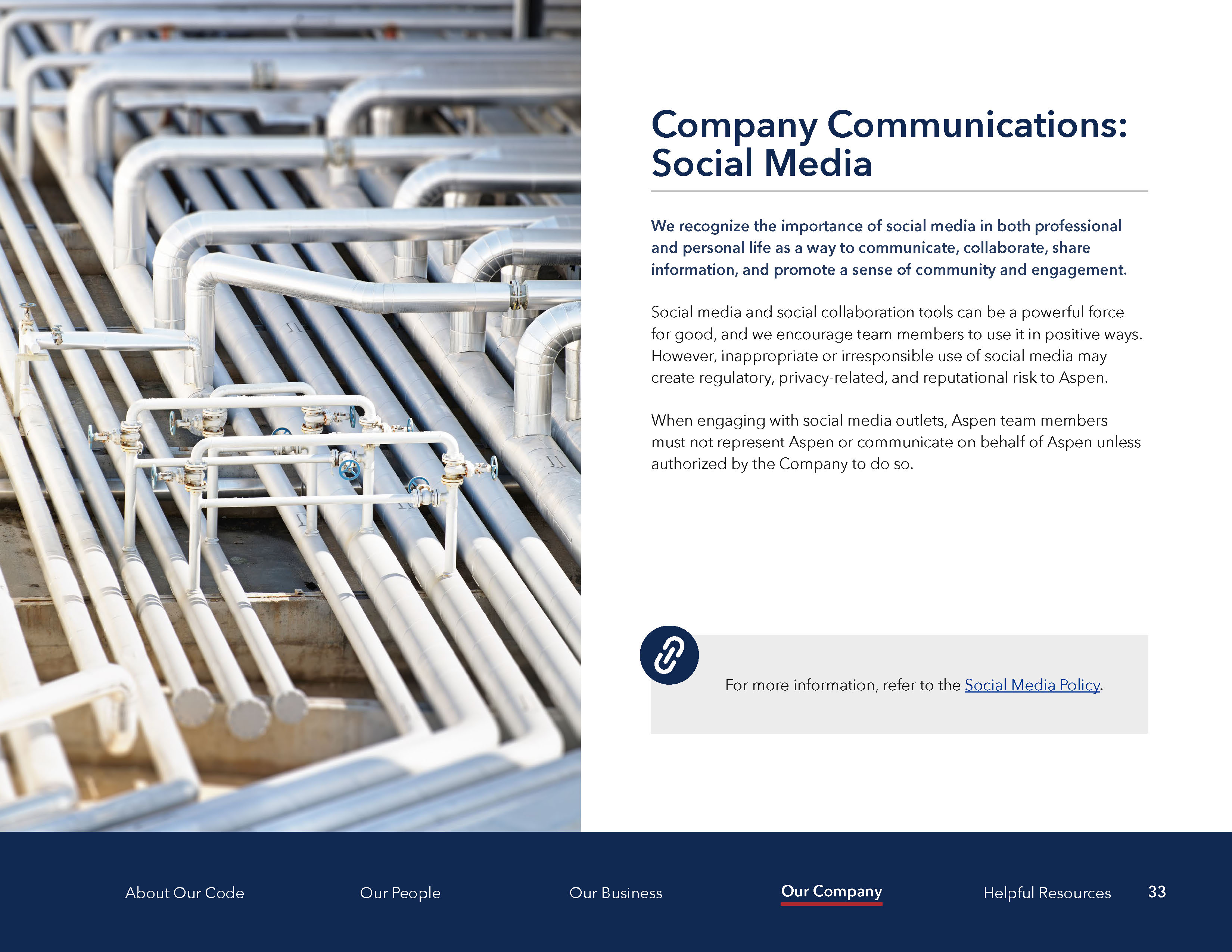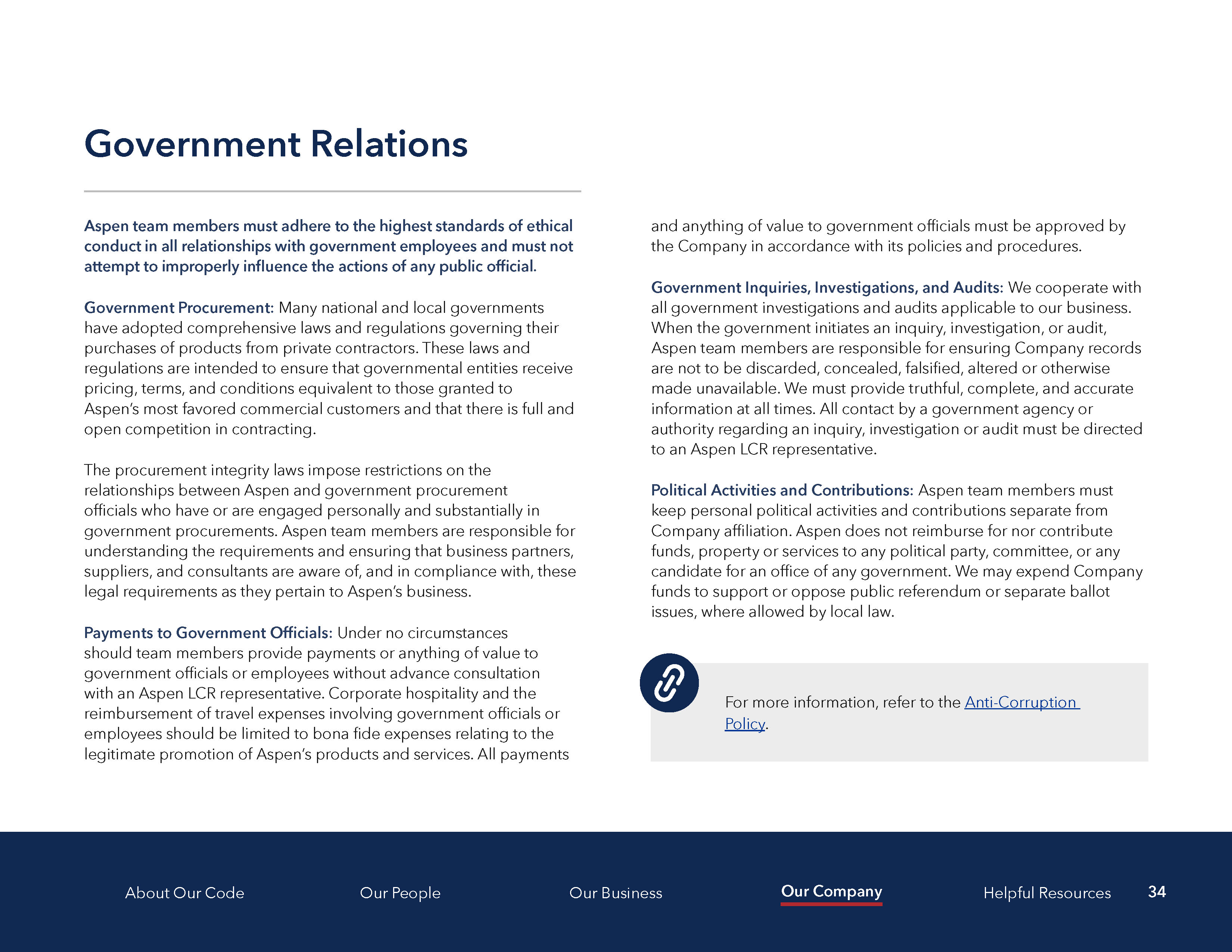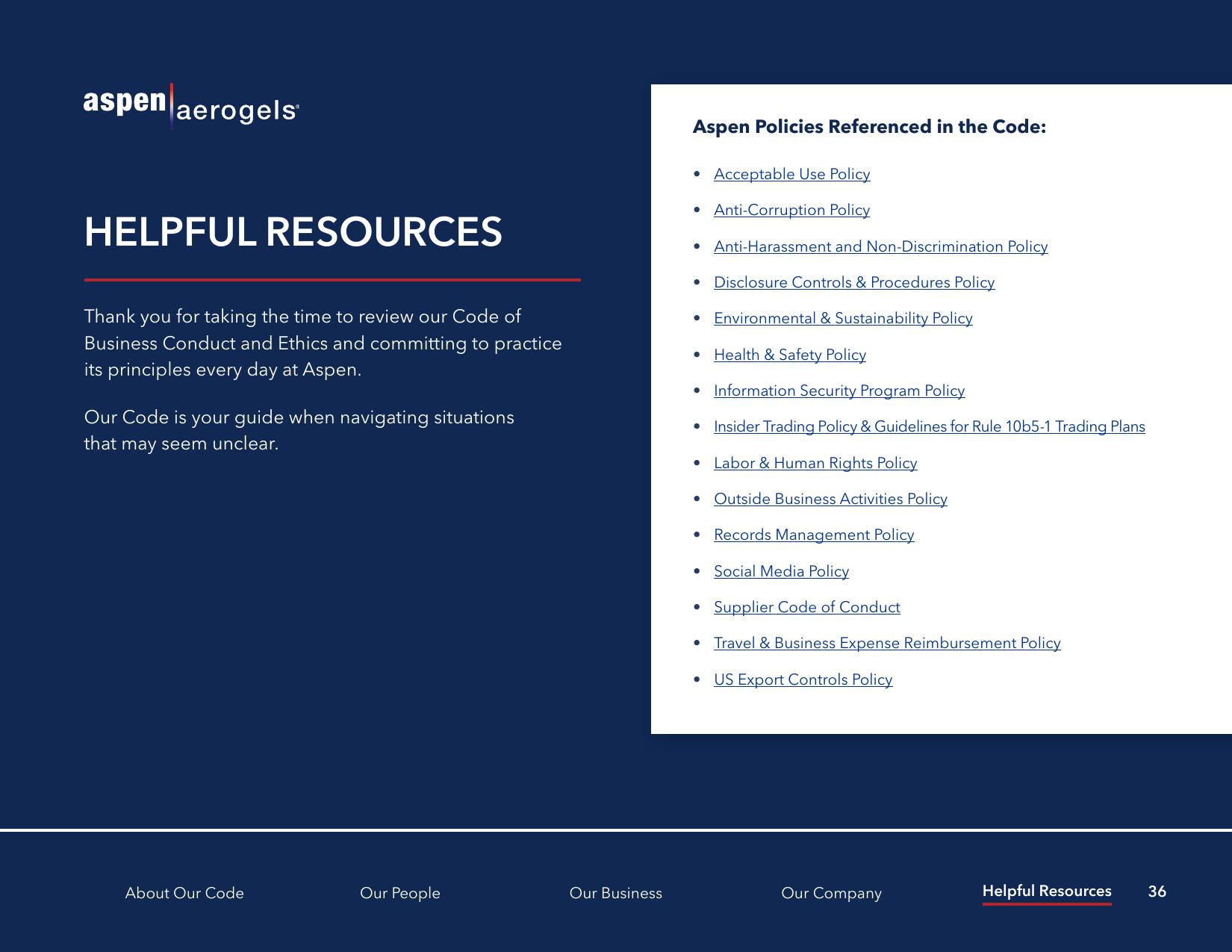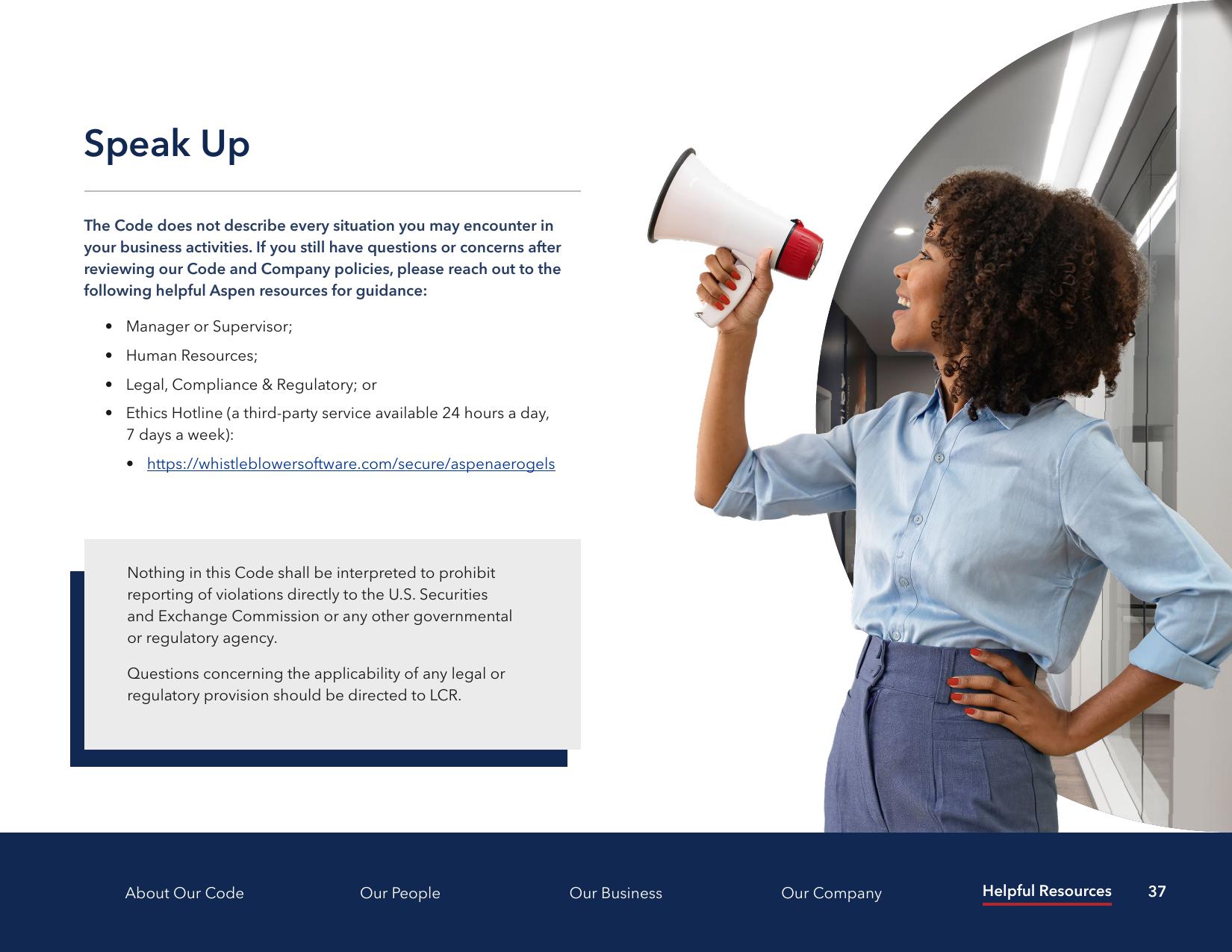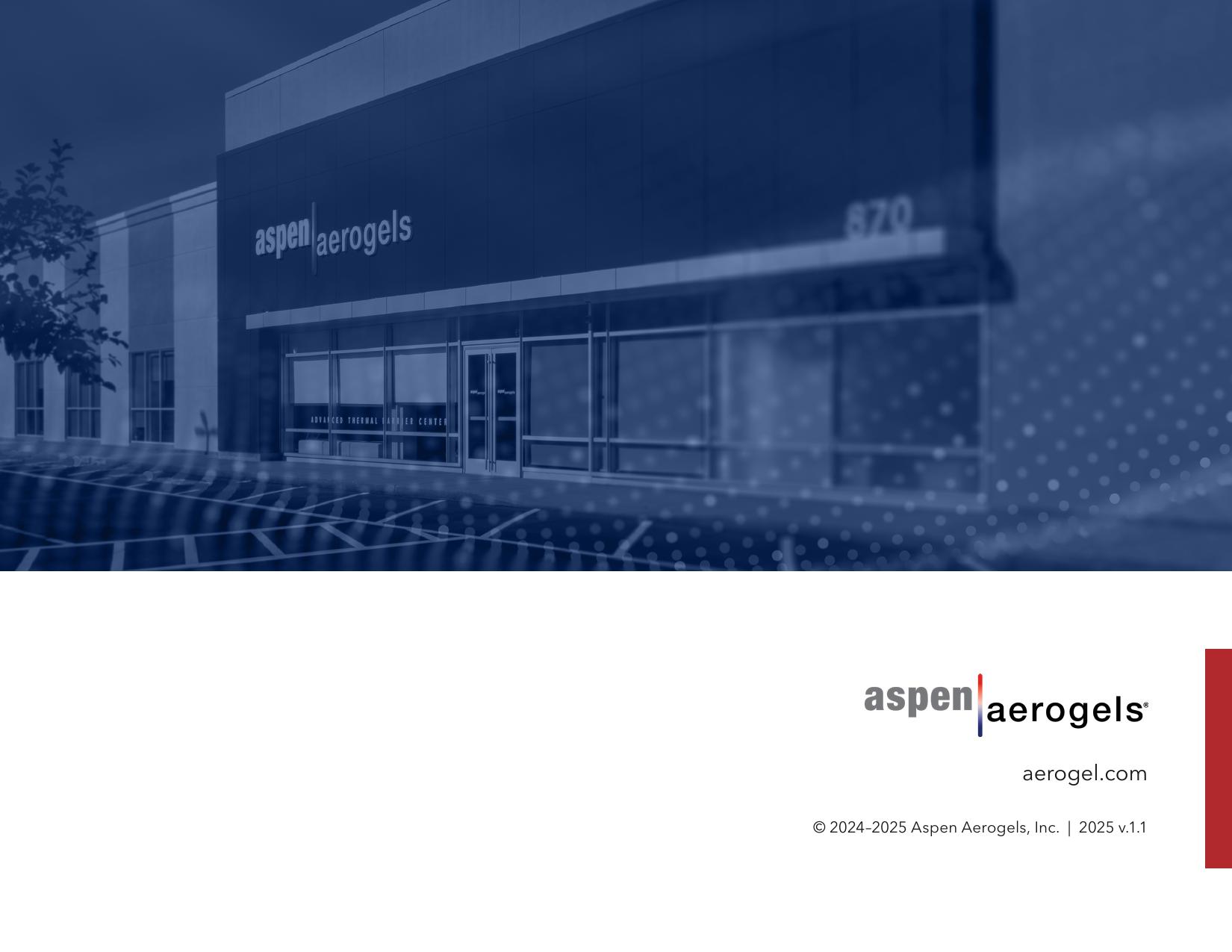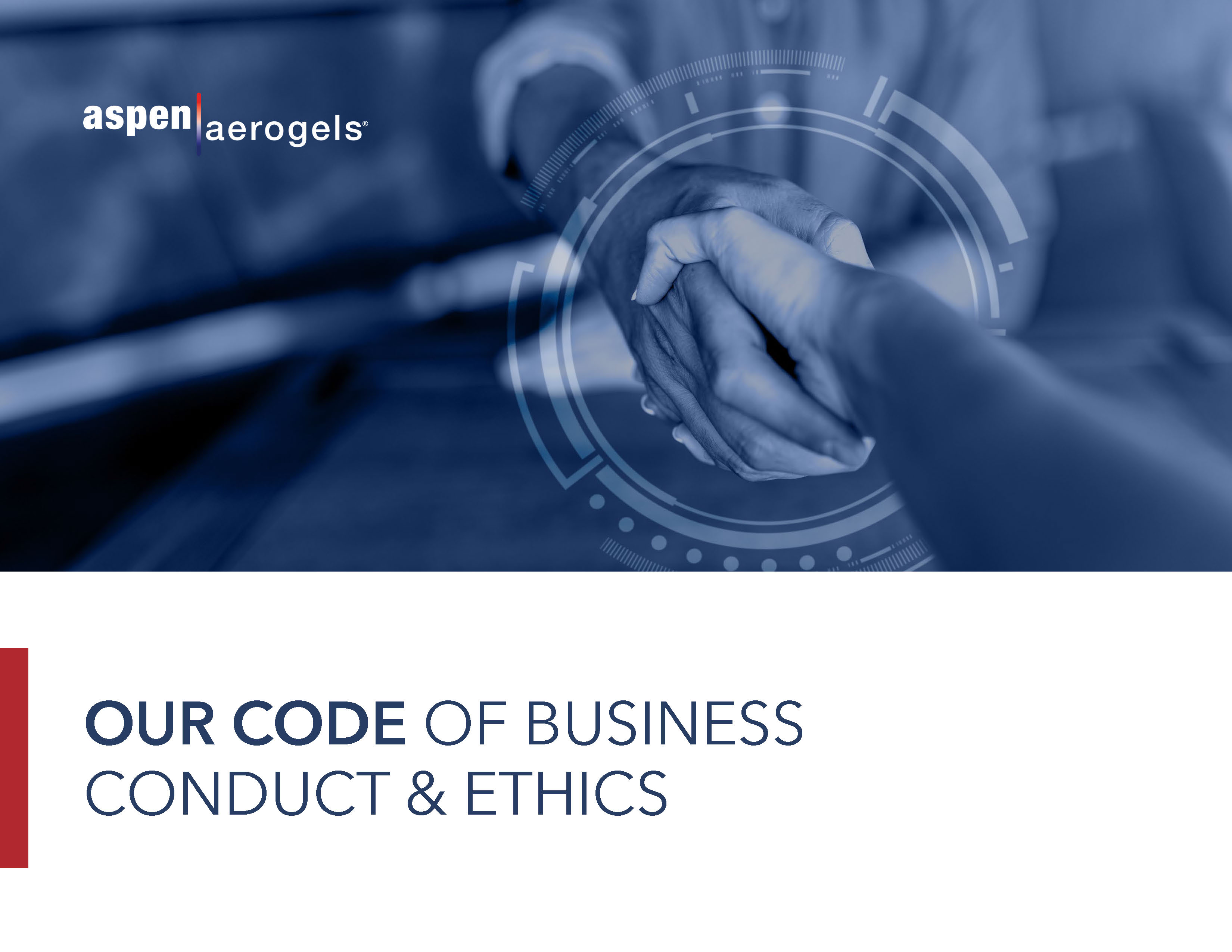
Exhibit 14.1

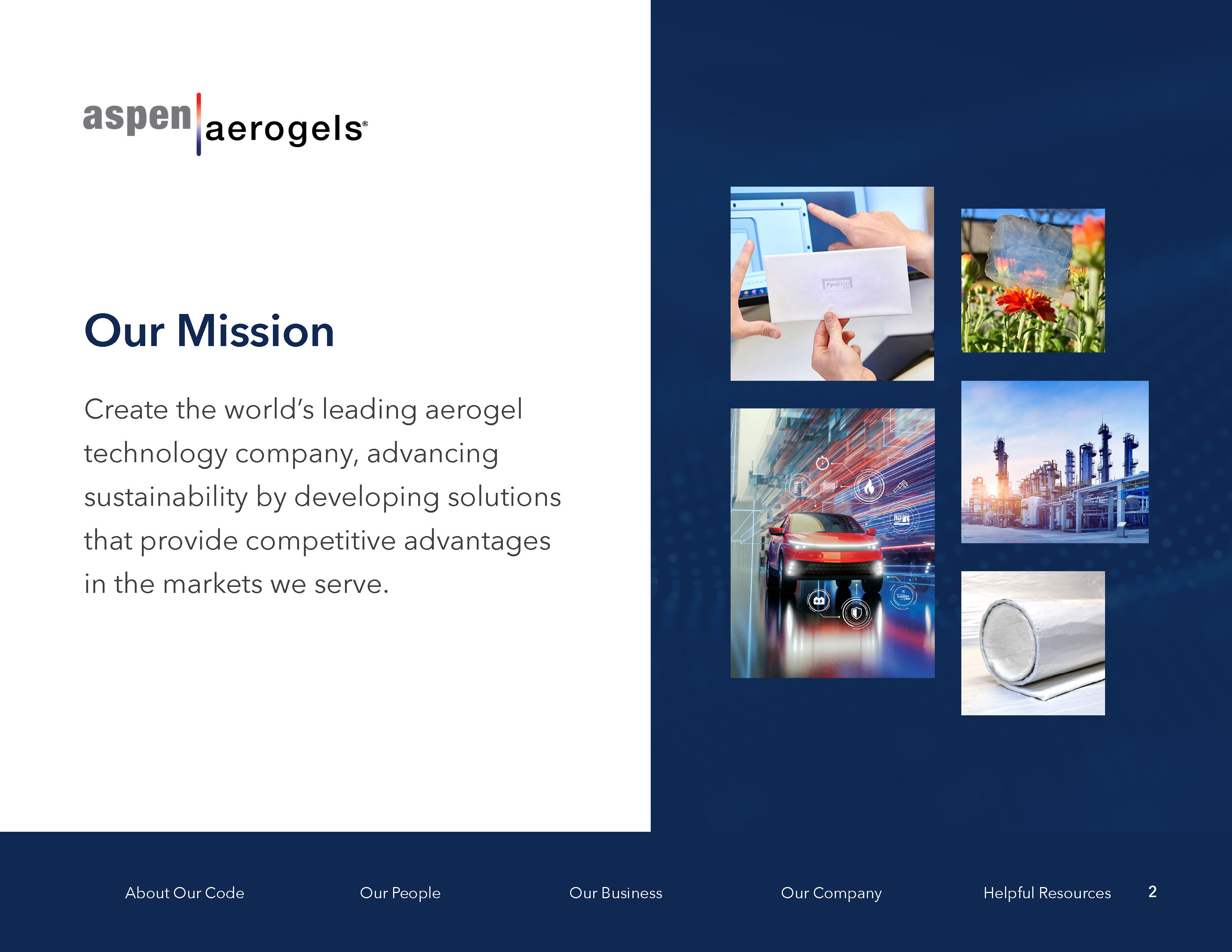

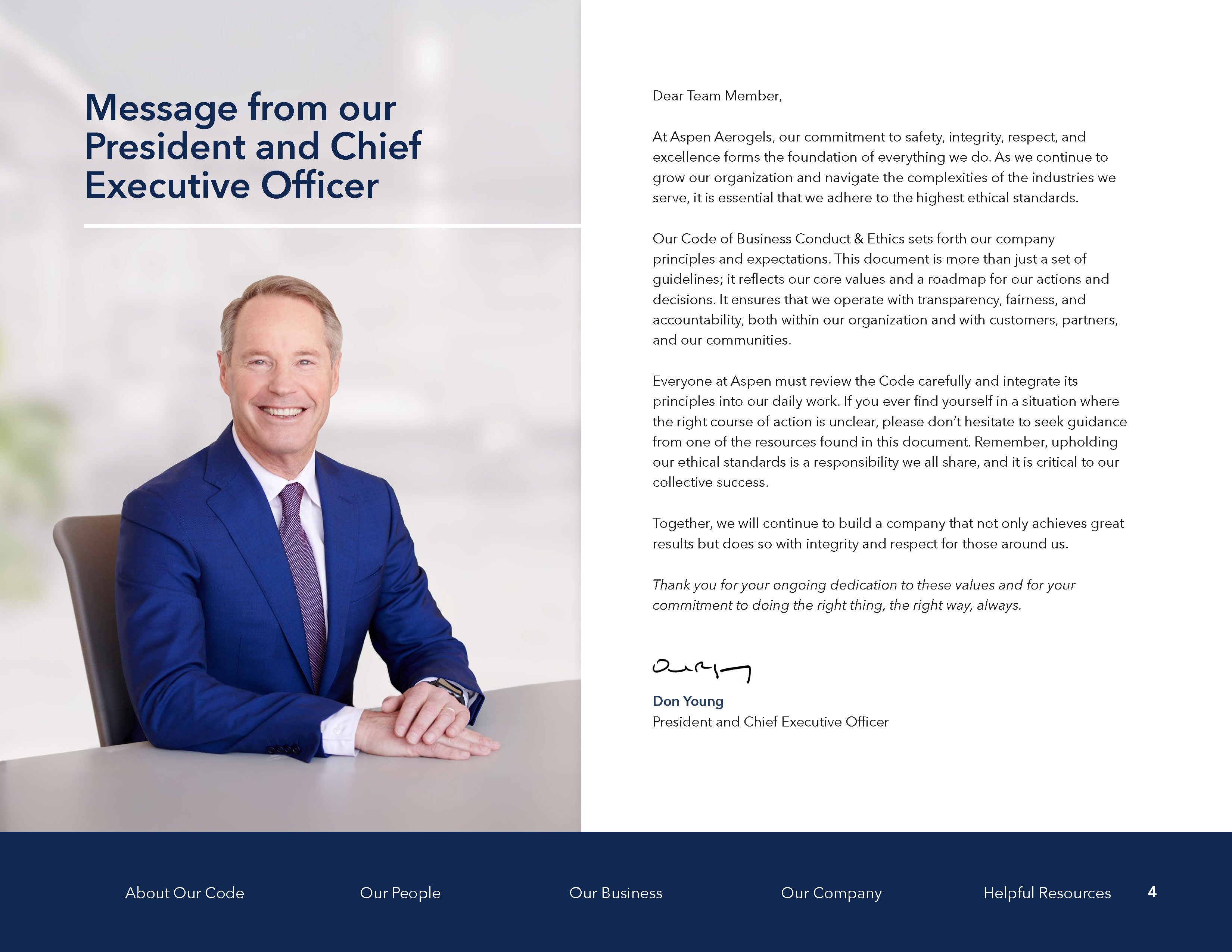
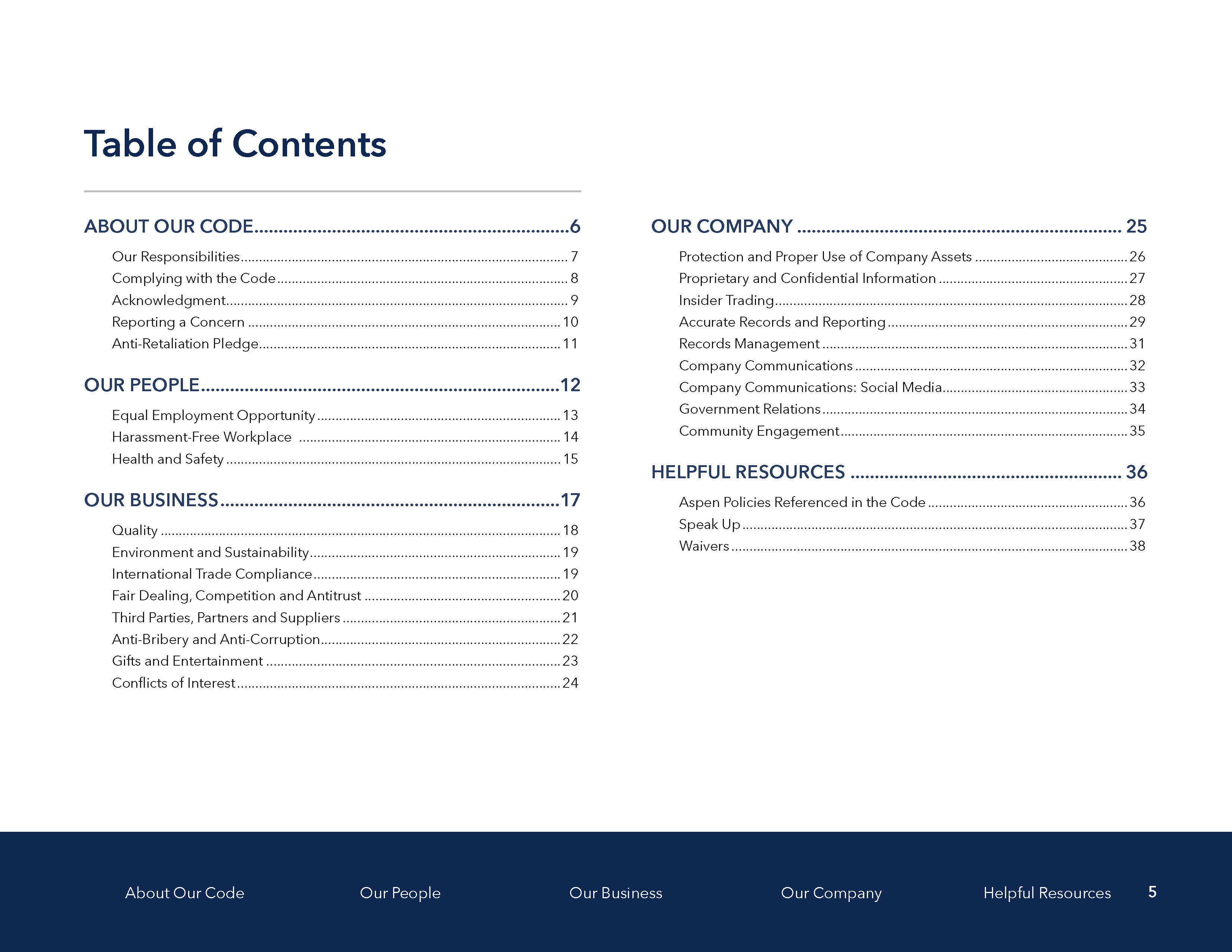
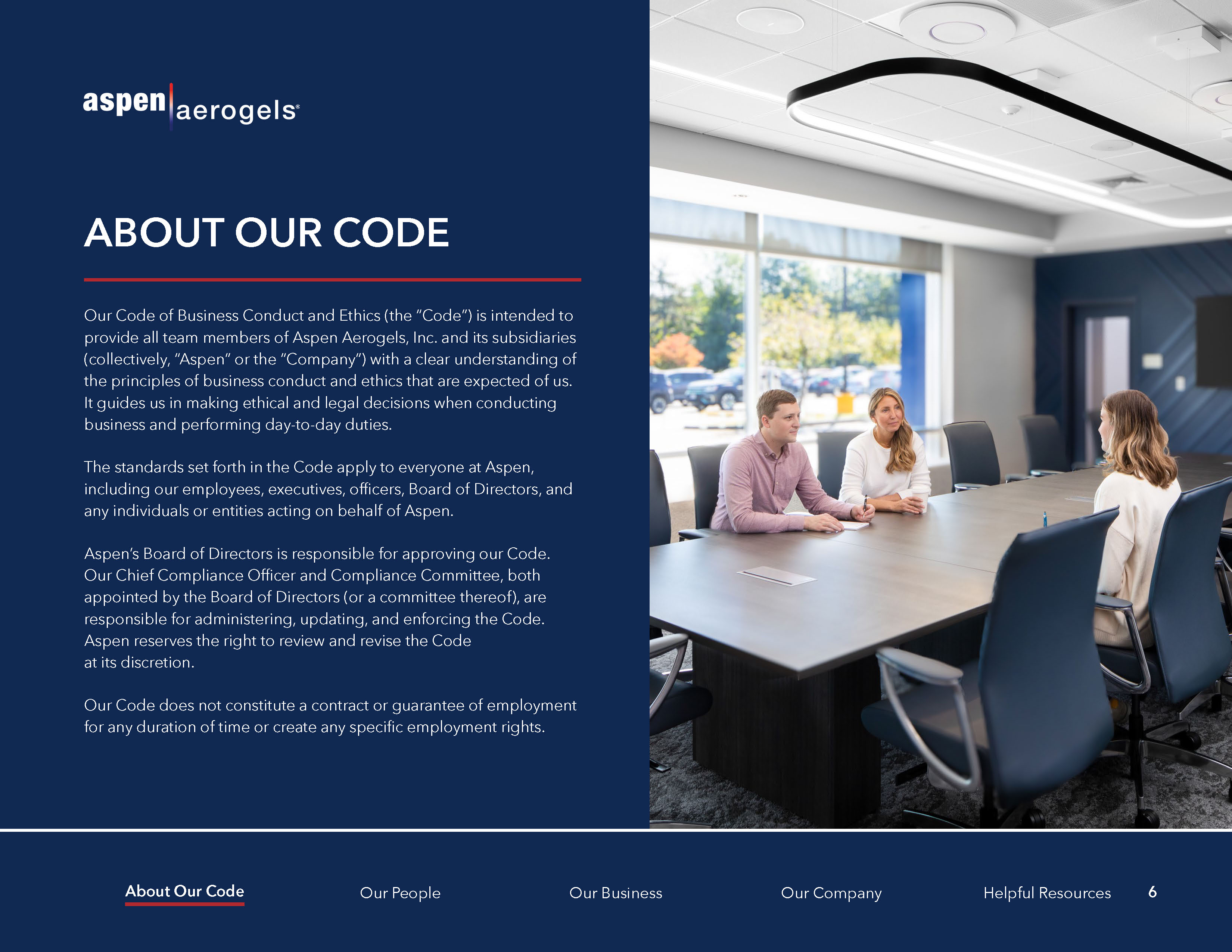
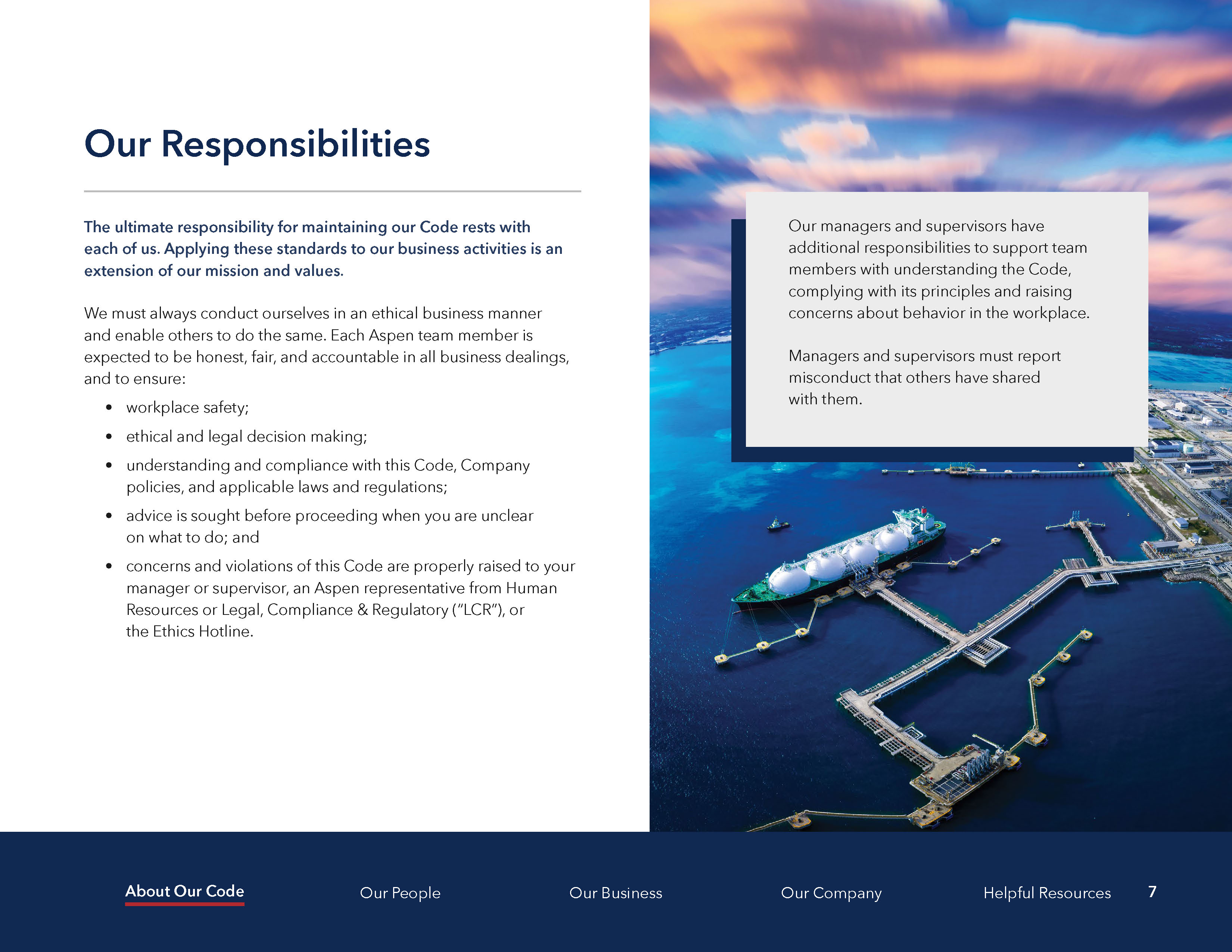


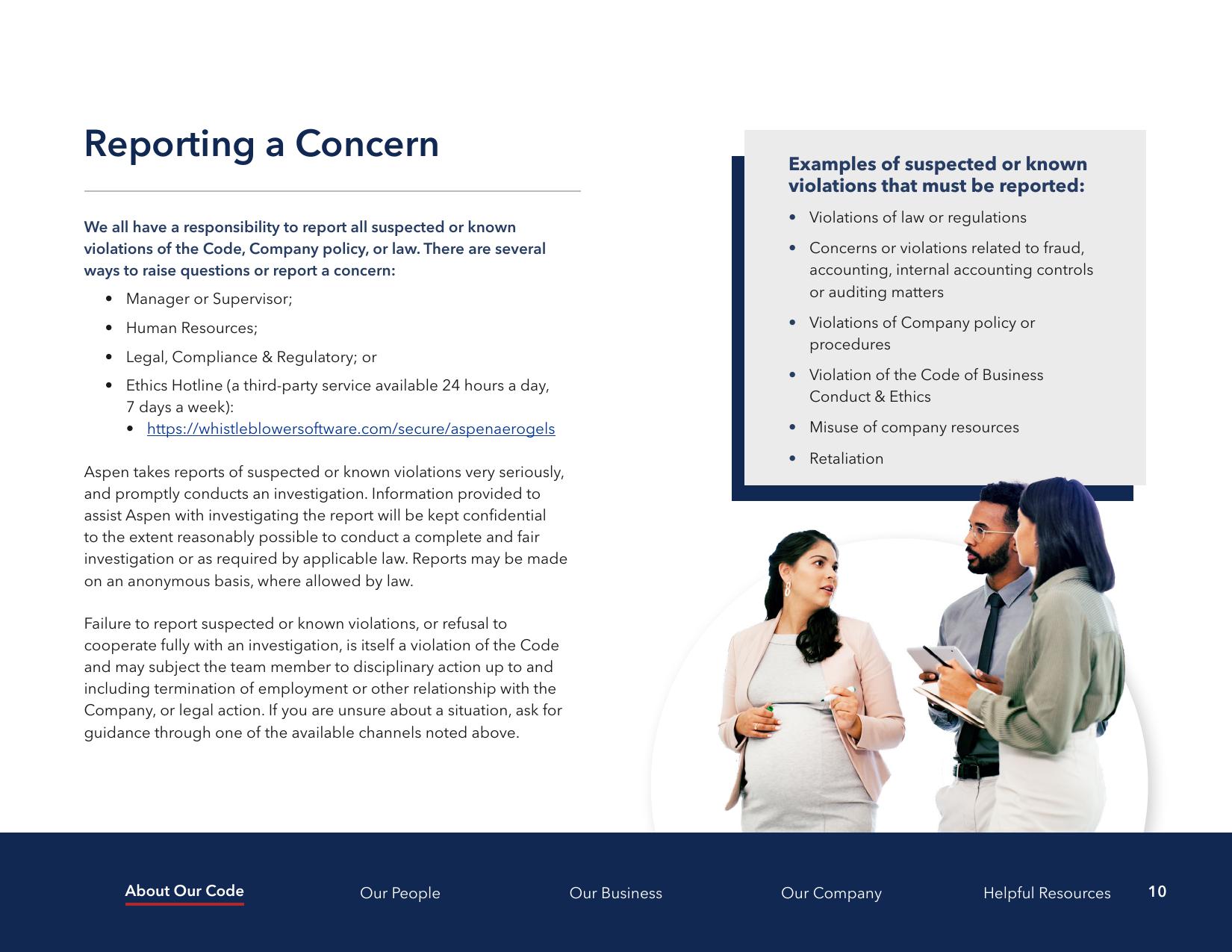
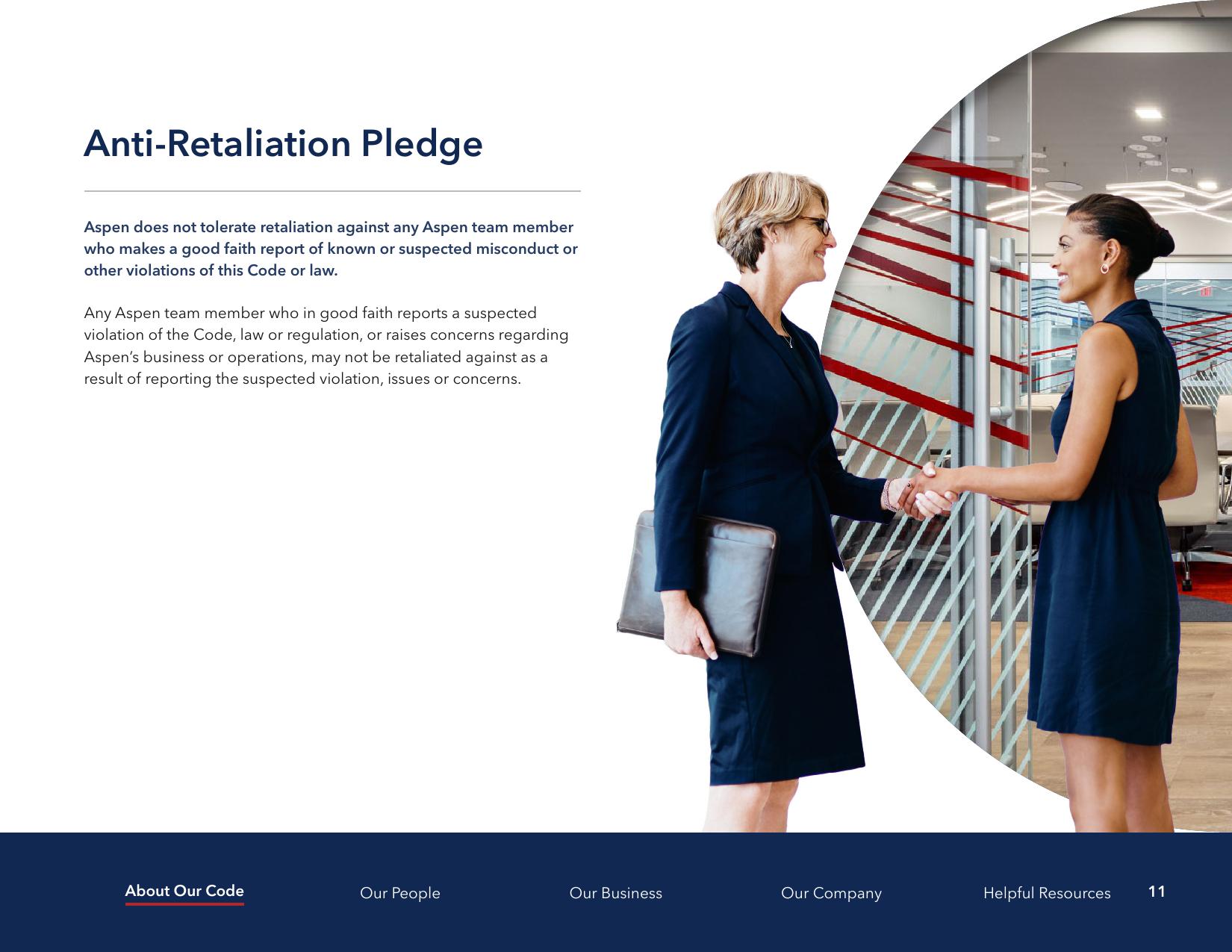
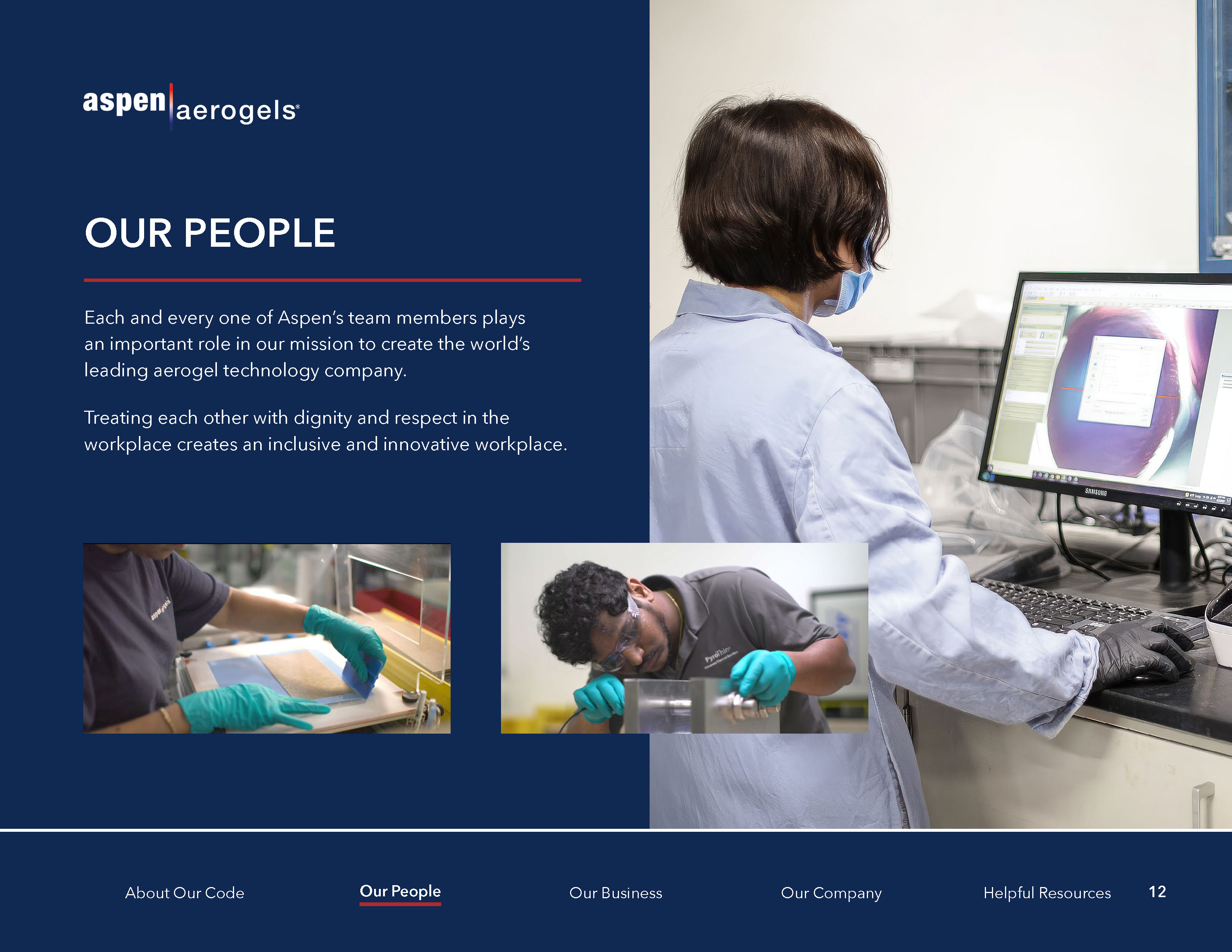
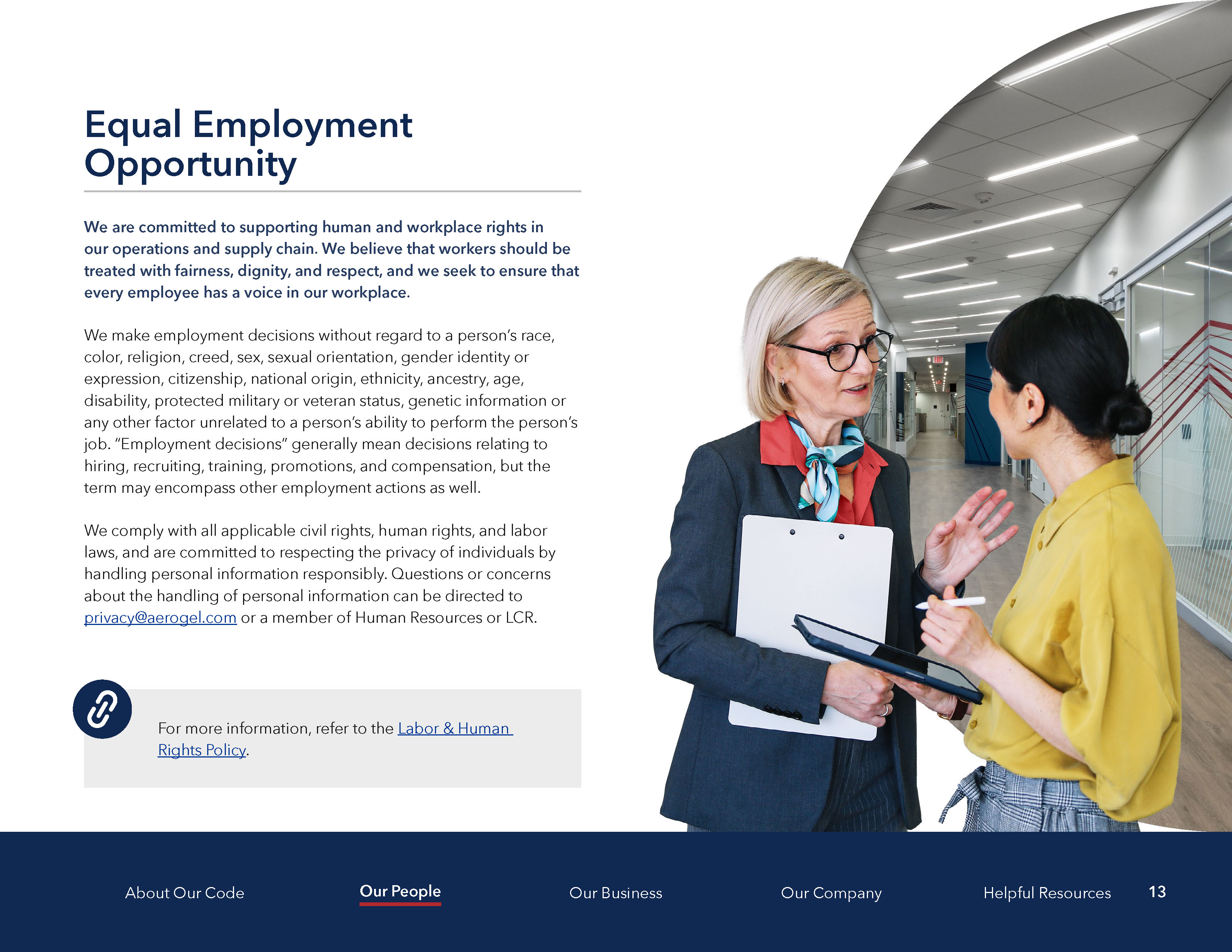
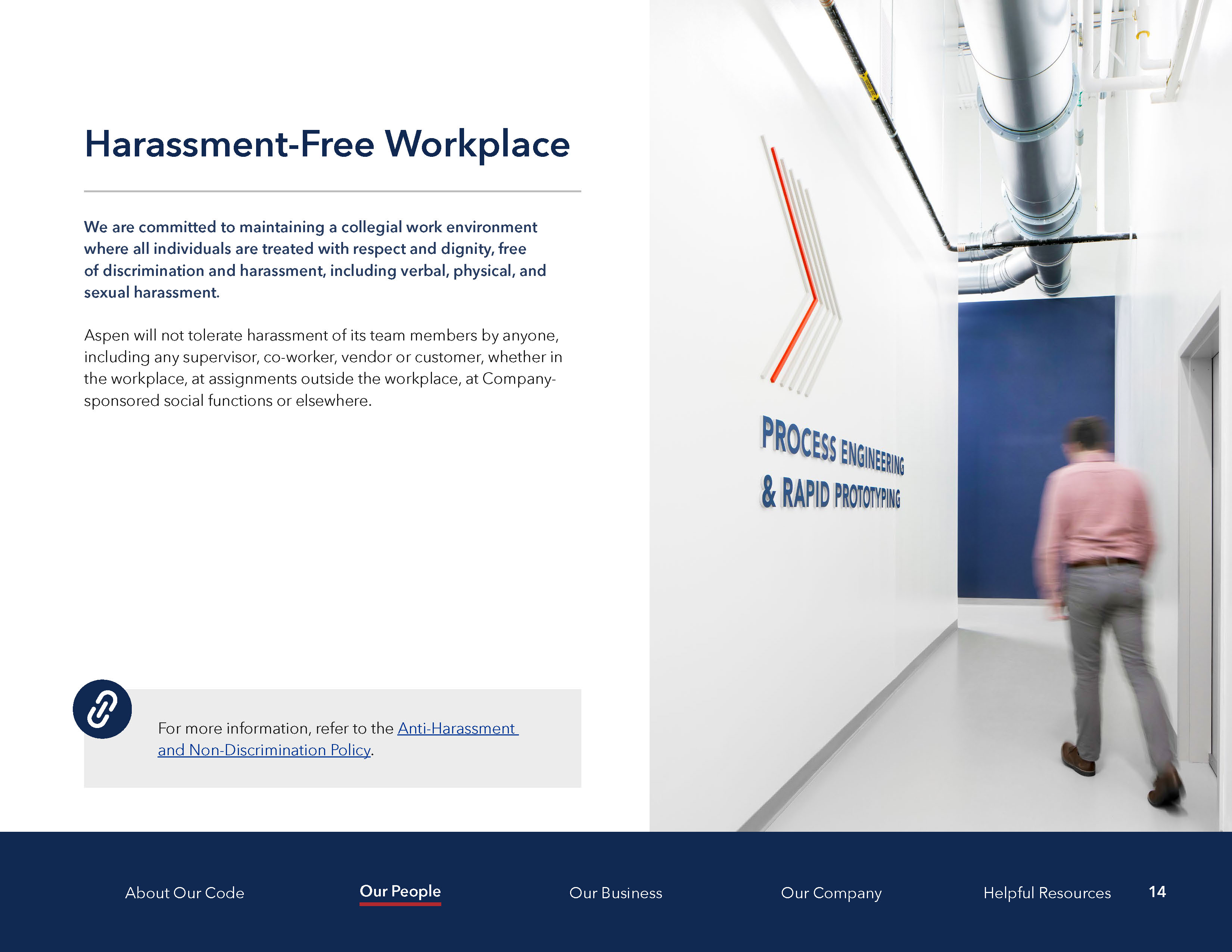
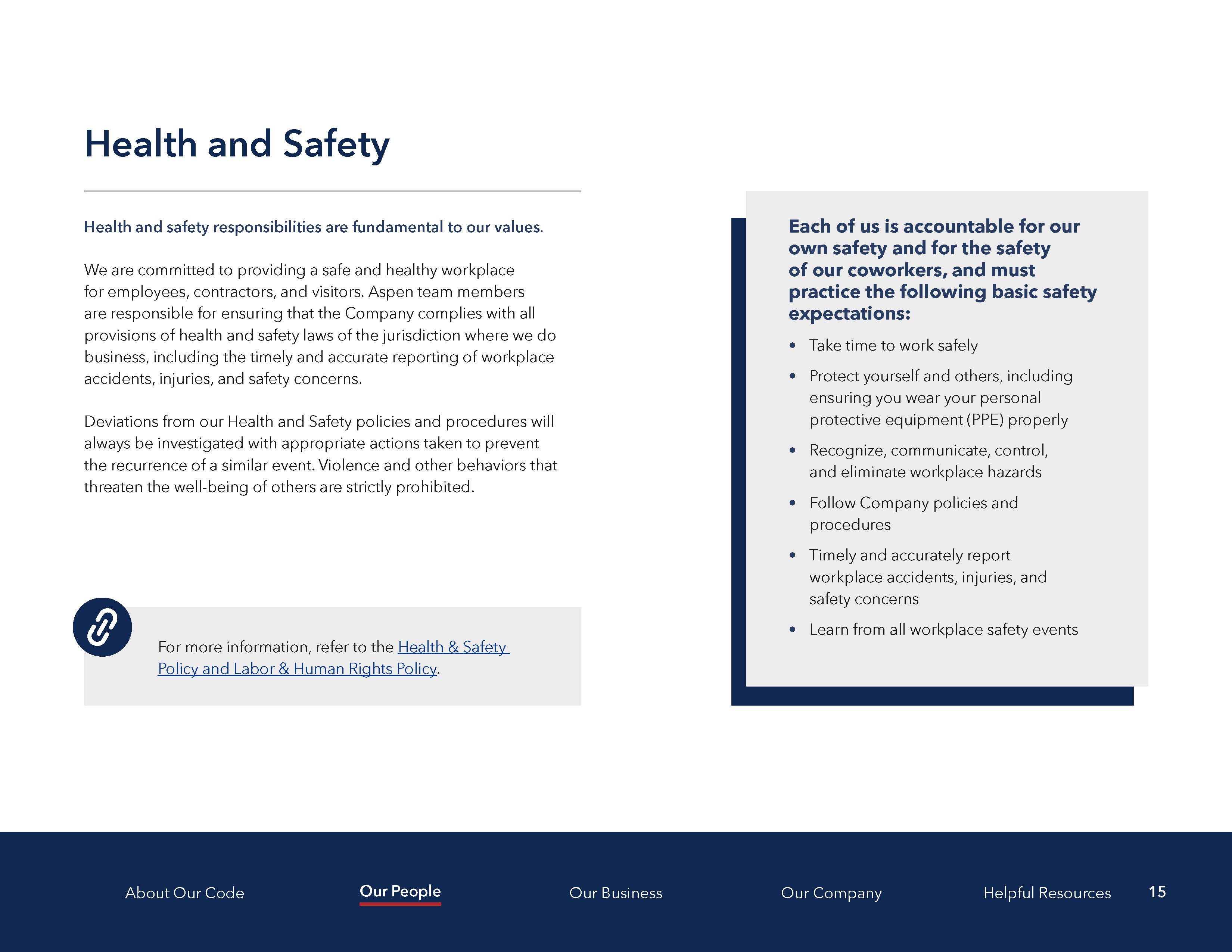
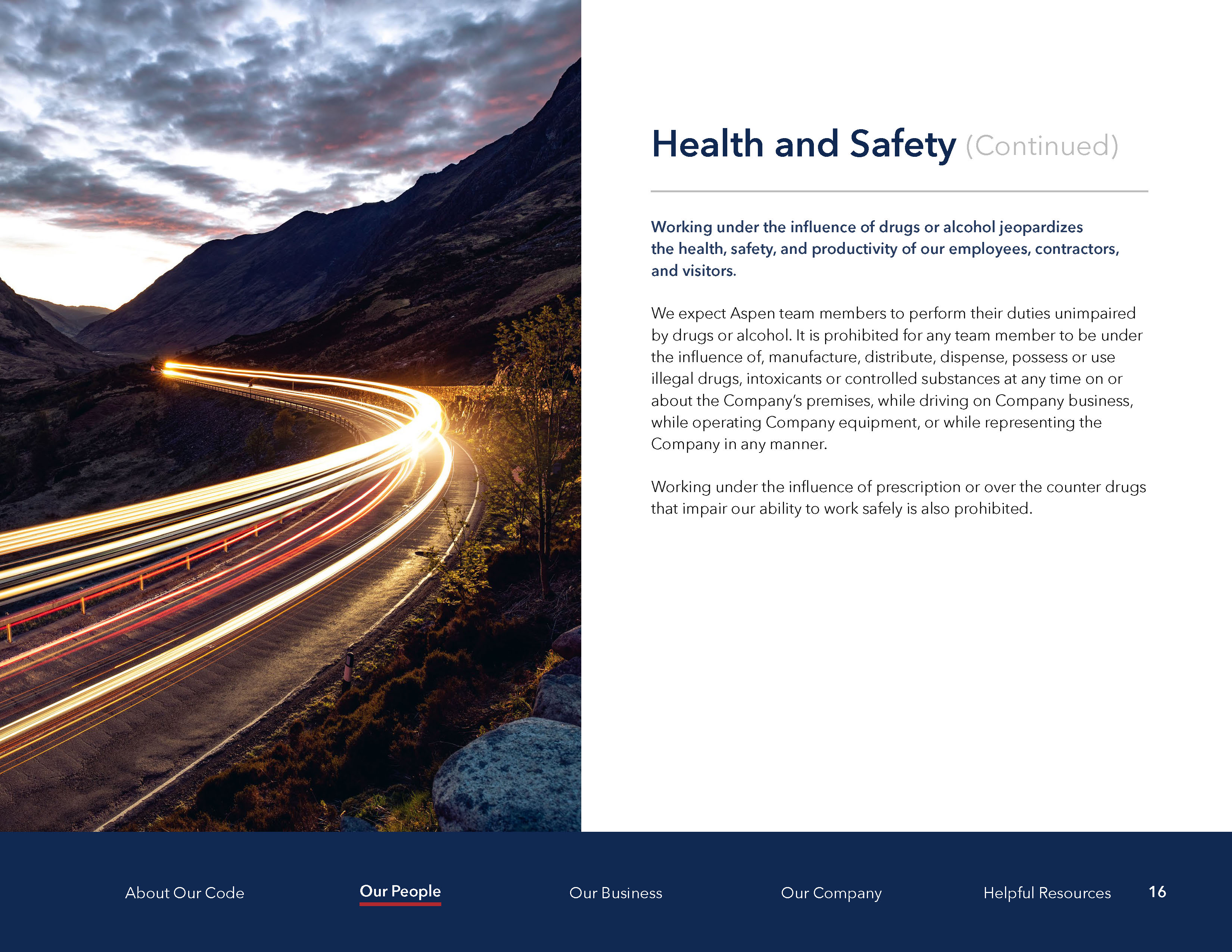
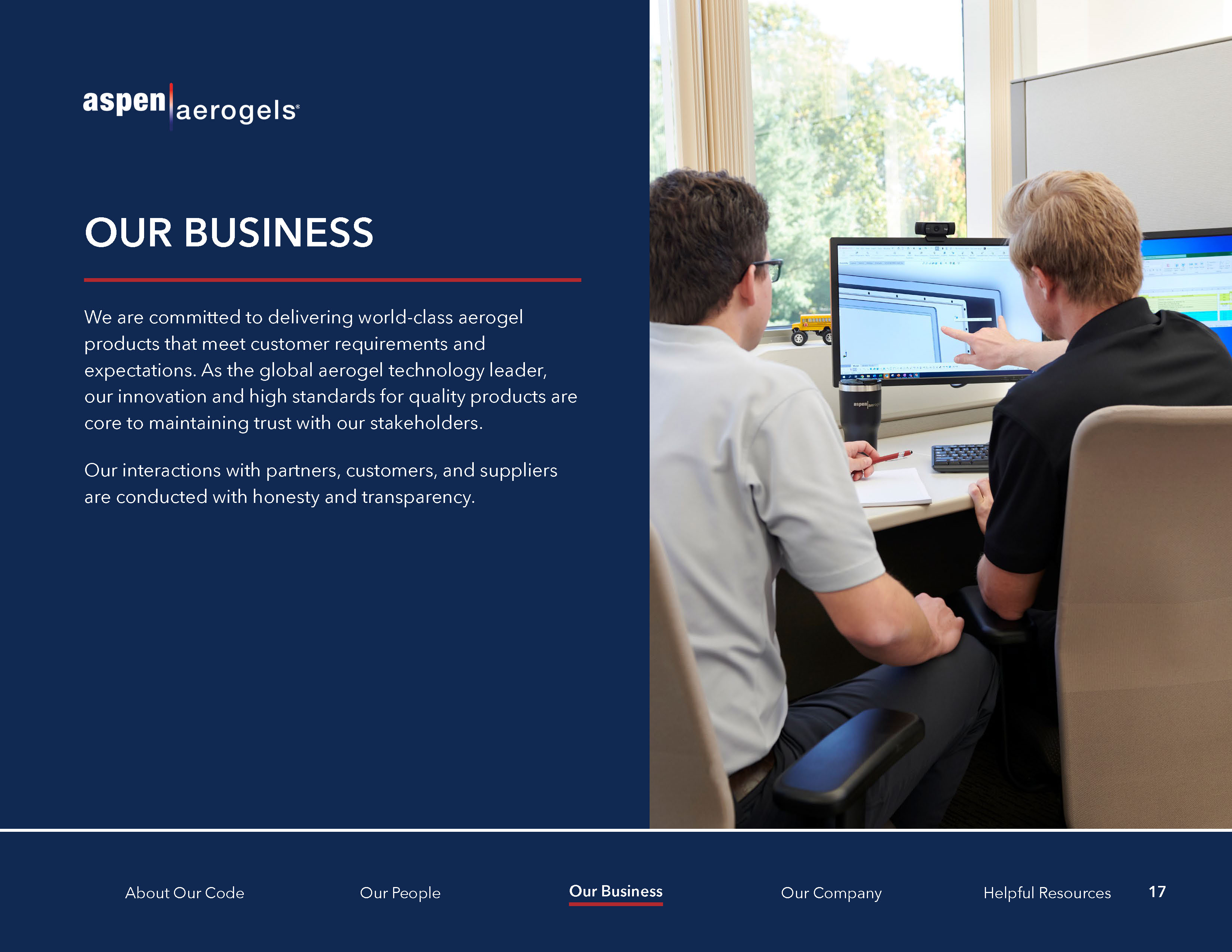
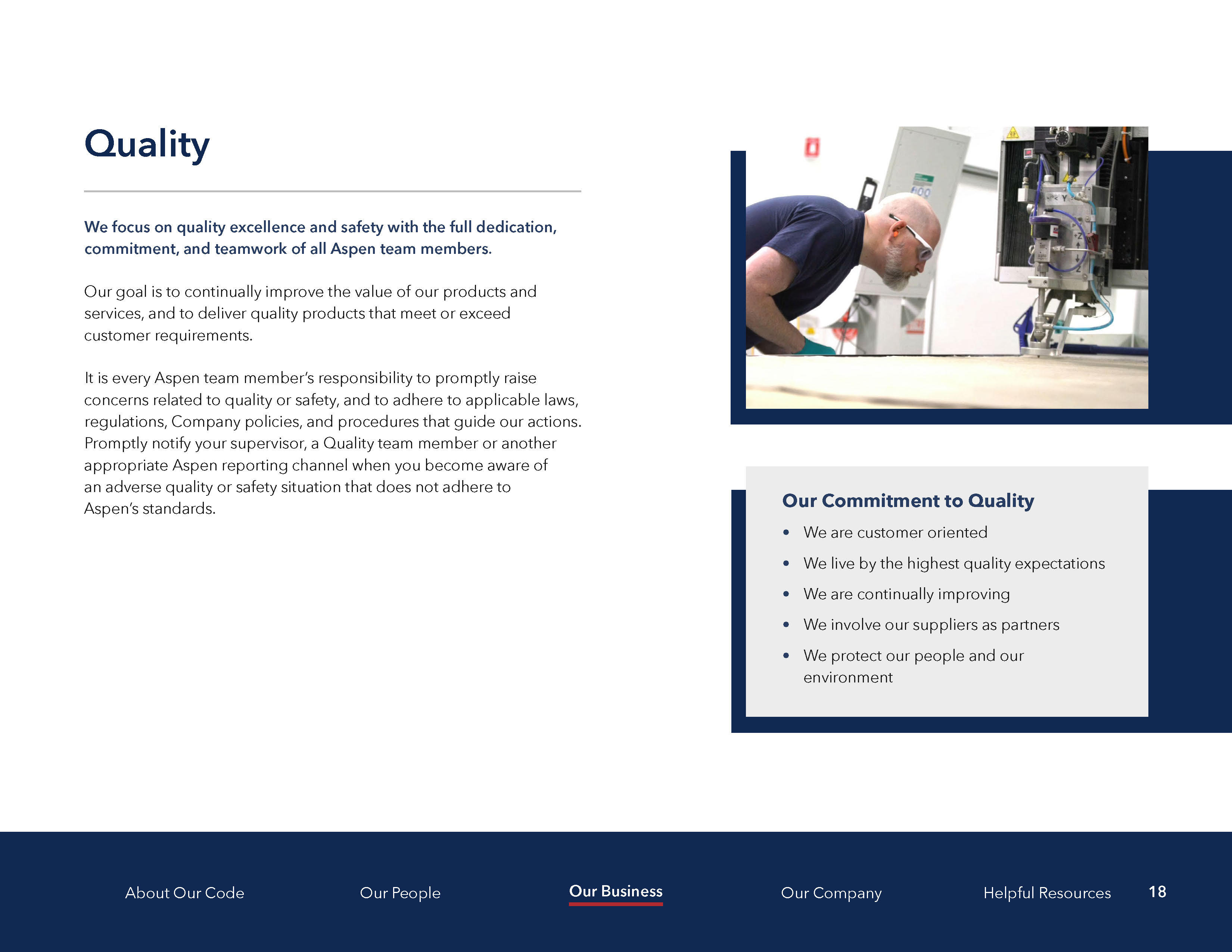

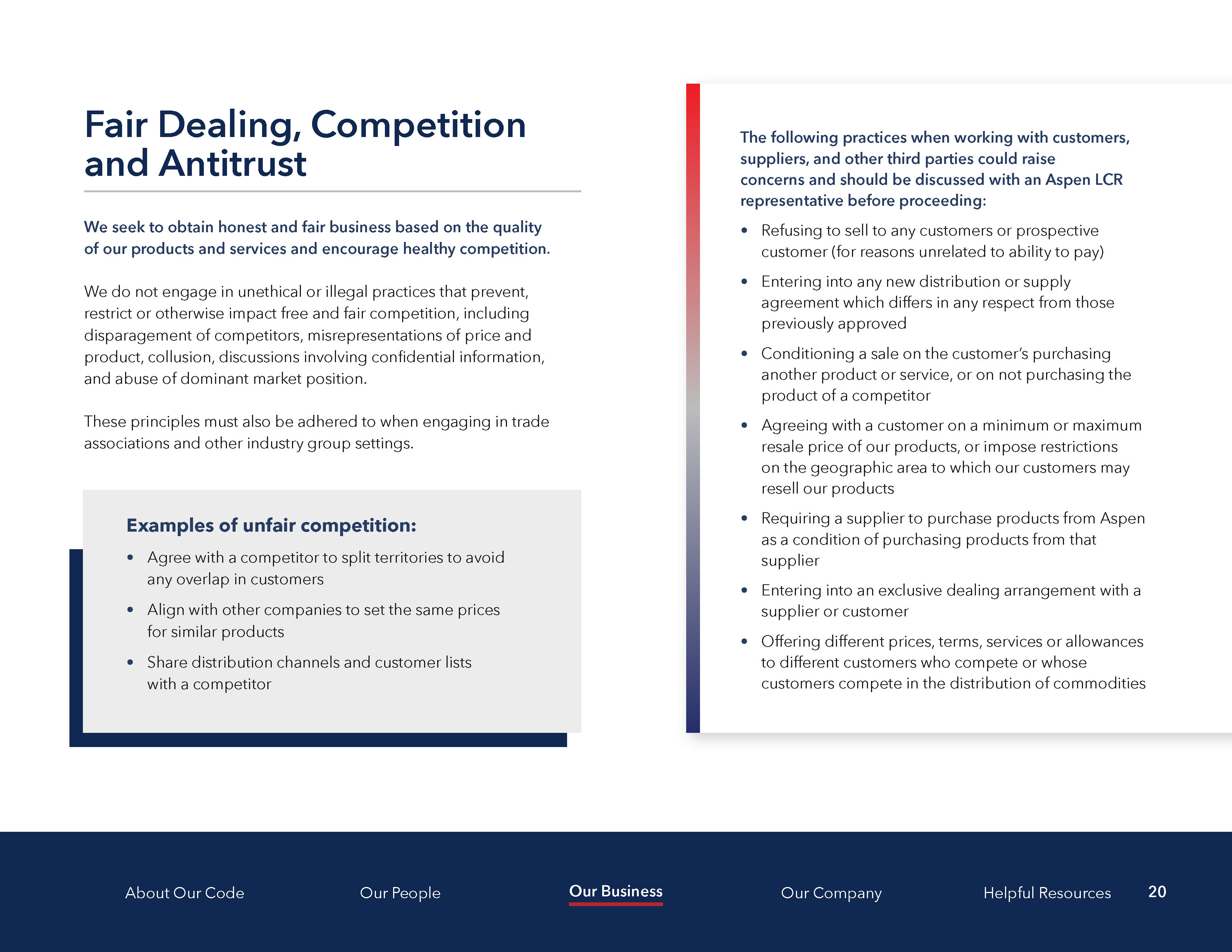
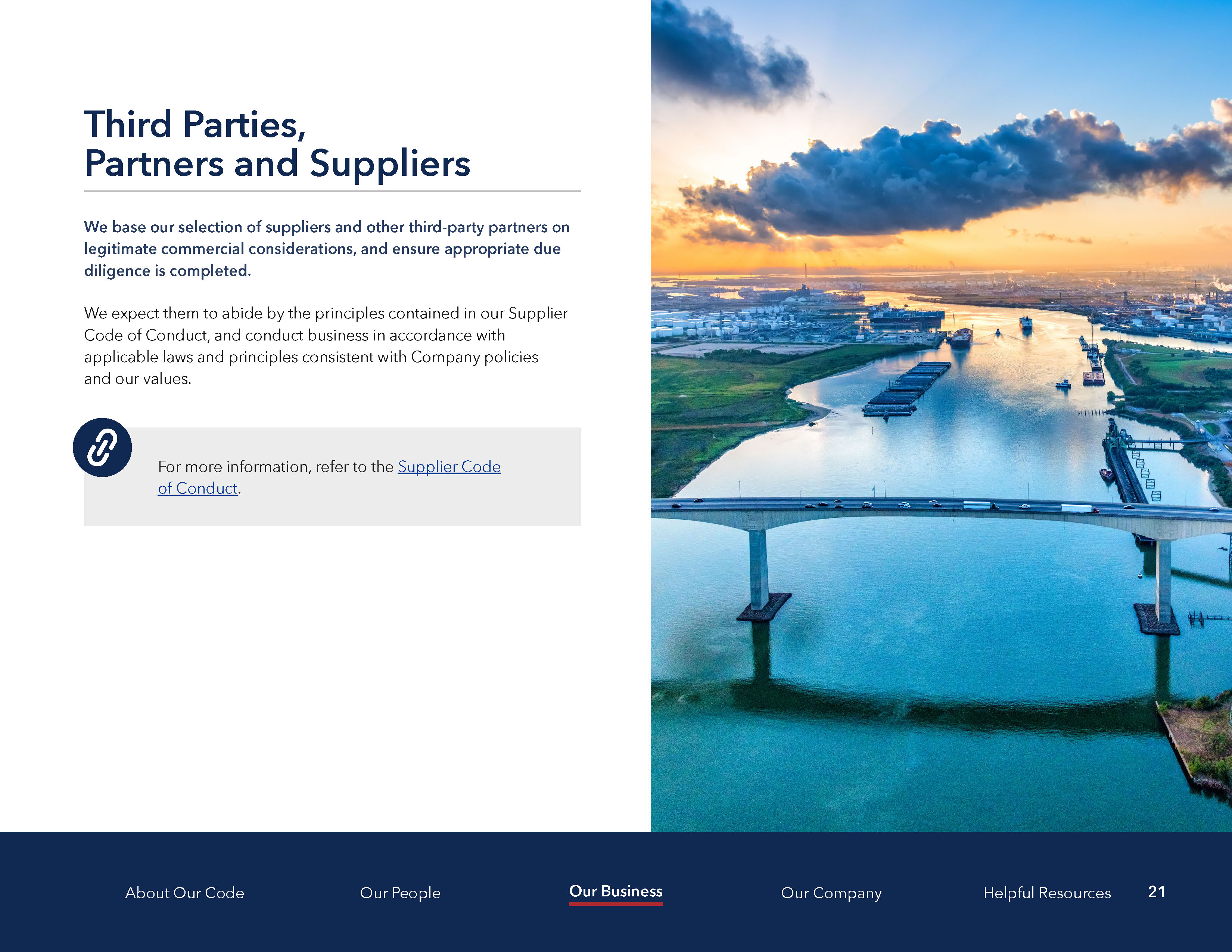
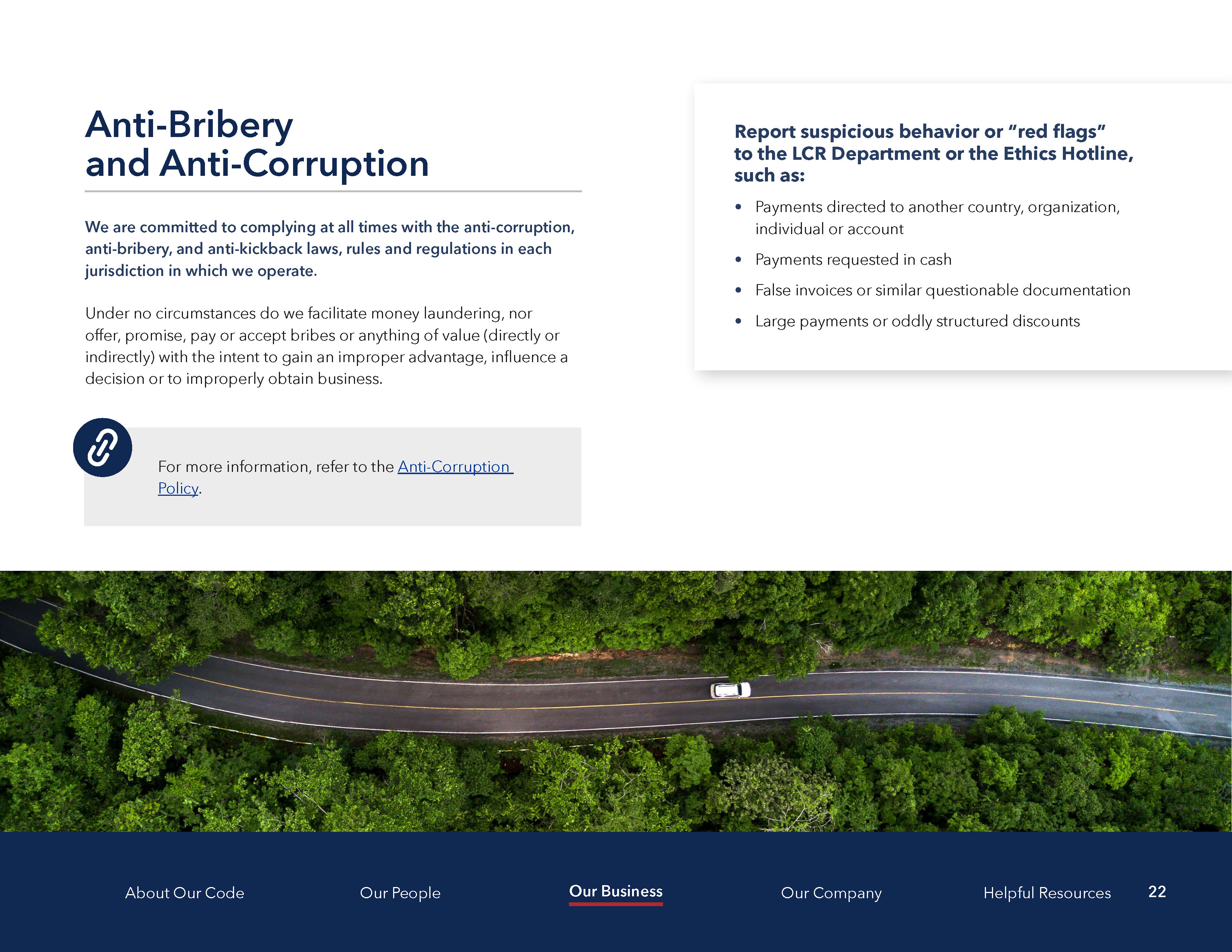
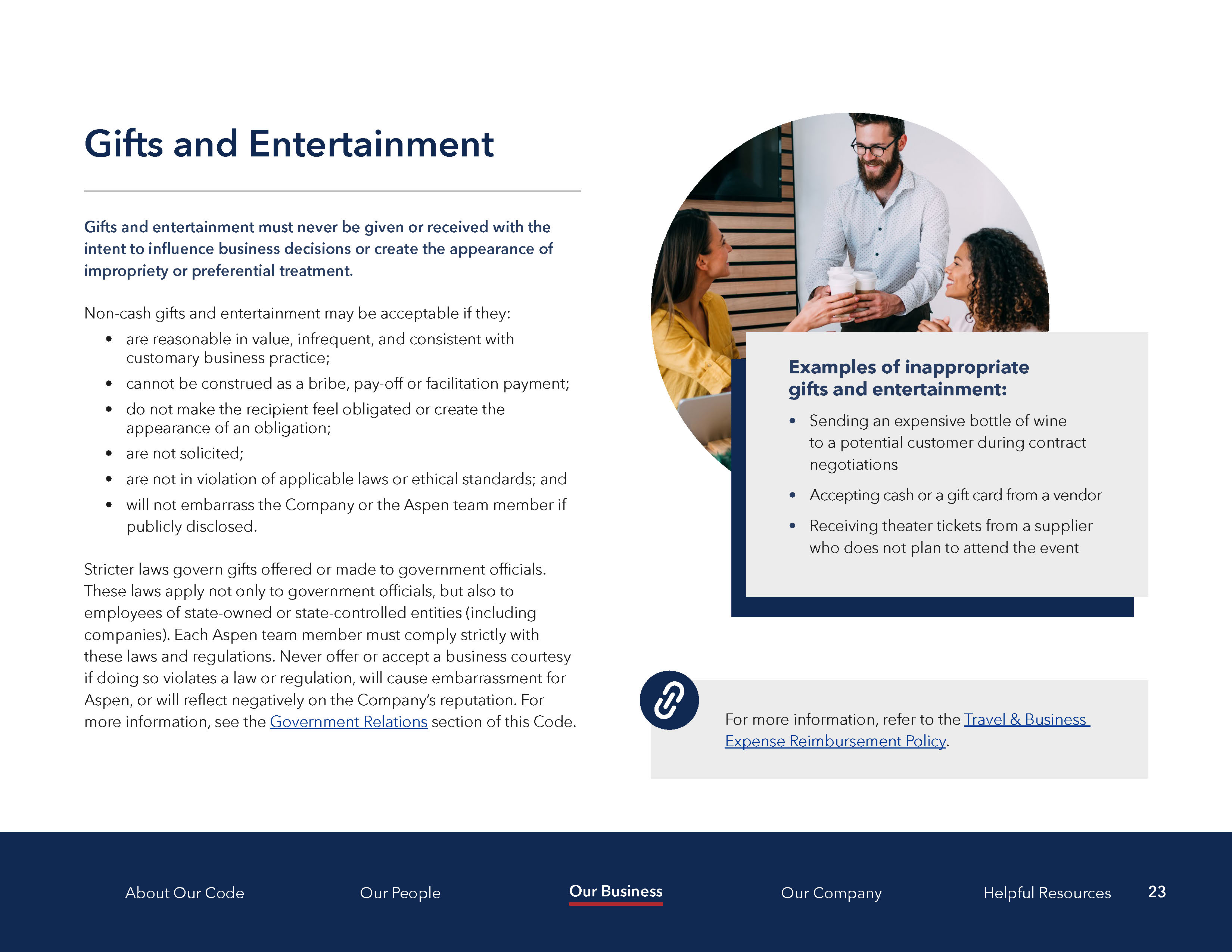
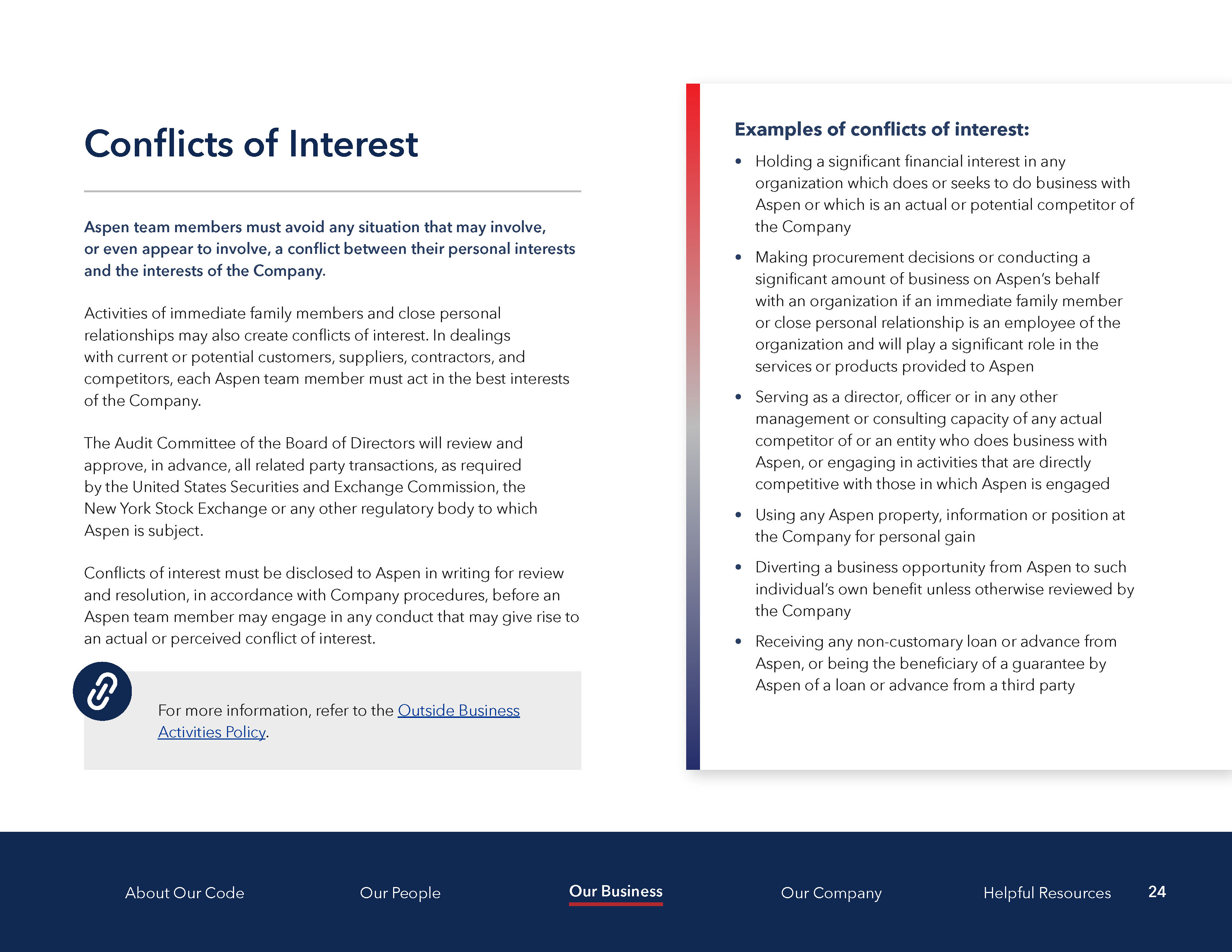

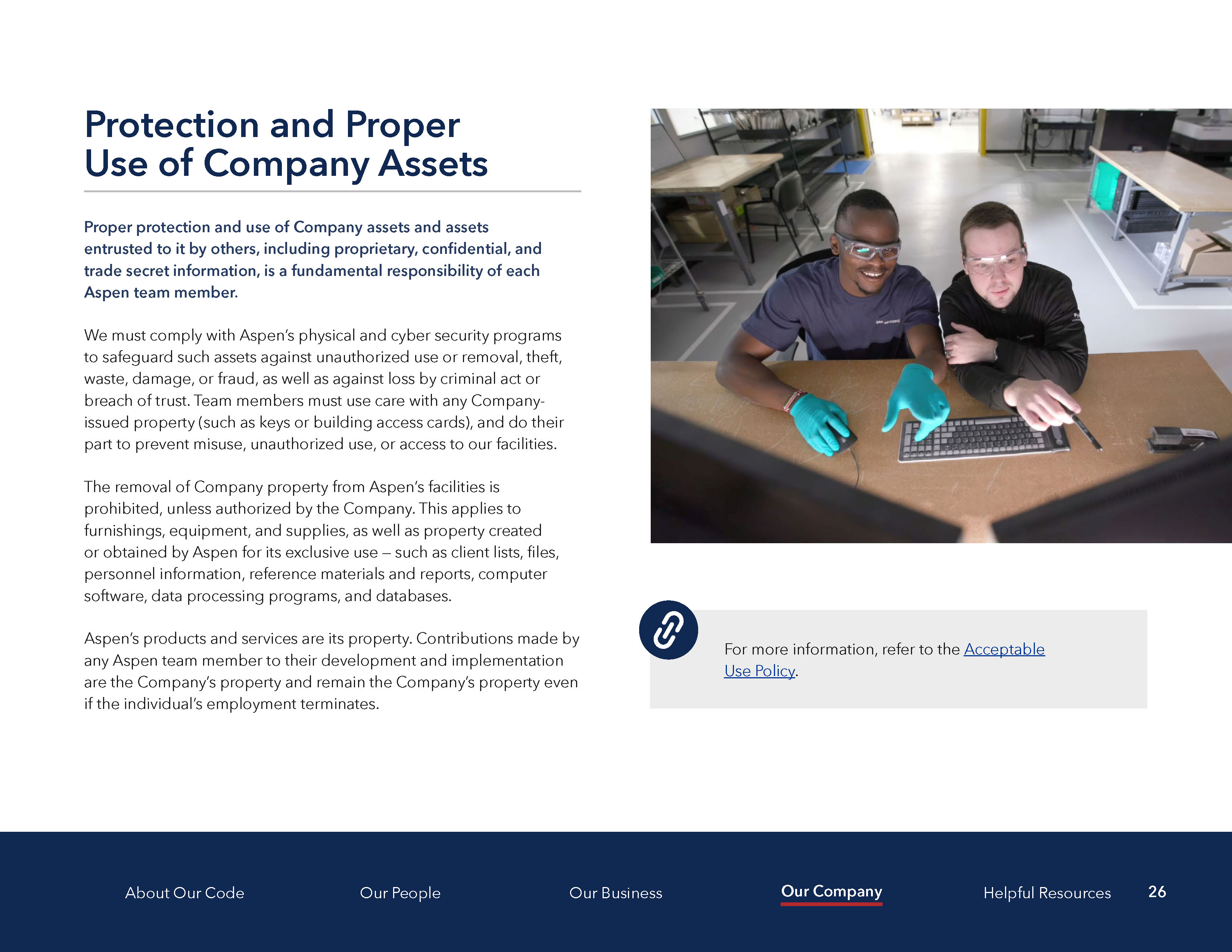

Examples of information to safeguard: • Information received from third parties in connection with Aspen's business • Aspen's plans and business strategy • Non-public operational and financial performance • Unannounced products and/or contracts • Sales data . Significant projects • Customer and supplier lists • Unpublished patent applications • Trade secrets, including manufacturing techniques, and equipment designs • Data and other information related to research and development • Individual employee information Sensitive financial information Proprietary and Confidential Information We provide Aspen team members with proprietary and confidential information relating to our Company and its business with the understanding that such information is to be held in confidence and not communicated to anyone who is not authorized to see it, except as may be required by law. These are costly, valuable resources developed for the exclusive benefit of the Company. Maintaining the confidentiality of Aspen proprietary information includes not discussing confidential information in a non-work setting without approval from LCR. In addition, such information should not be shared inside Aspen unless the recipient has a bona fide need to know the information. This requirement extends to maintaining a clean workplace environment. The obligation to maintain confidentiality and protect the Company's information extends after employment from Aspen ceases. At no time may Aspen's proprietary and confidential information be disclosed to an unauthorized third party or used for personal benefit. I For more information, refer to the Information Security Program Policy. About Our Code Our People Our Business Our Company Helpful Resources 27

